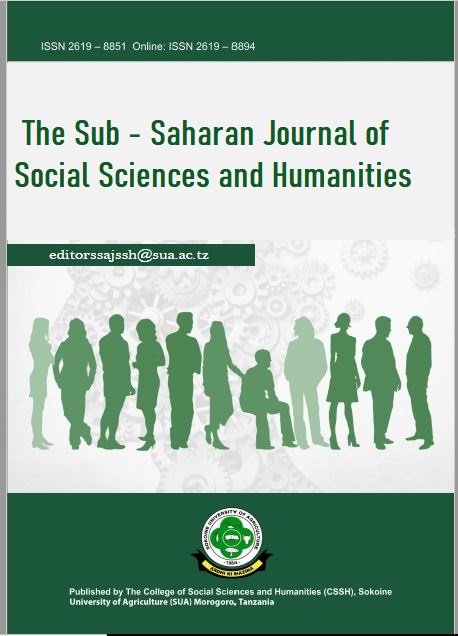Correlates of Livelihood Pathway Choices among Smallholder Farmers in Rice Commercialization in Kilombero, Tanzania
Keywords:
Livelihood Trajectories, Rice Commercialization, Gender Disparities, Multinomial Logistic Regression, Smallholder EmpowermentAbstract
Improving livelihoods in agrarian economies remains a central development challenge, particularly within the context of agricultural commercialization. This study investigates the correlates influencing smallholder farmers’ choices of livelihood pathways; stepping up, stepping out, hanging in, or dropping out; within the rice commercialization processes in Kilombero District, Tanzania. Guided by the APRA (Agricultural Policy Research in Africa) framework, a repeated cross-sectional design and mixed-methods approach were employed, drawing data from 10 purposively selected villages. Inferential analysis using multinomial logistic regression revealed statistically significant associations between farmers' socio-economic profiles and livelihood trajectories. Female farmers (p < 0.01), households with low empowerment scores (p < 0.05), and multidimensionally poor (MPI) farmers (p < 0.01) were significantly more likely to hang in or step out rather than step up in commercialization. Additionally, limited access to extension services (p < 0.05), weak market linkages (p < 0.05), and lack of credit access (p < 0.01) were negatively associated with upward livelihood mobility. Qualitative findings reinforced the role of institutional and structural barriers, particularly gender norms and asset inequality, in constraining farmers’ commercialization outcomes. The study recommends targeted policy interventions that enhance women’s and youth empowerment, promote equitable access to technologies such as the System of Rice Intensification (SRI), and strengthen institutional support systems and market integration for smallholder farmers.


